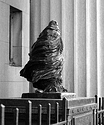I got this is my "related videos" fro the previous one, it is fantastic. It is one of the last runs of the big coater at Ferrania. You see the drying tunnel when drying inkjet paper and, one of the control rooms for the coater (or coaterS? it says number 6 in the video!) and lastly the actual coating room and coating head during the startup of the coating operation! From the images posted by Ferrania you can see it is the same equipment. I really hope that the bulk of this machinery is safely in storage now.
@PE are they in any way similar to those in use at Kodak?
So i take it they were coating non-photosensitive inkjet paper in there as well? Im pretty sure they stopped production of photographic paper some time back. Either way, the lights were turned on, so this must be non-light sensitive.
I thought there was only one coater in that building, so im interested to hear from Ferrania regarding this, perhaps the video of the paper going through was taken at a different time?
Another note on hygene, whas the mask really necessary? The other person in the same room was not even wearing one lol
I also thought that contaminants were an issue?
There is a video from the Kodak factory in the 1950's and they took extreme measures to keep the area clean, it was essentially a clean room environment and the workers went through air showers to keep dust etc to a minimum. They also wore hair nets and gloves etc to keep the contaminants down as much as possible.
They even showed a list of products/foods that workers had to avoid while away from work that may contain contaminants to film.
Brazil nuts for example contain radium.
PE will obviously know more, in this area.






